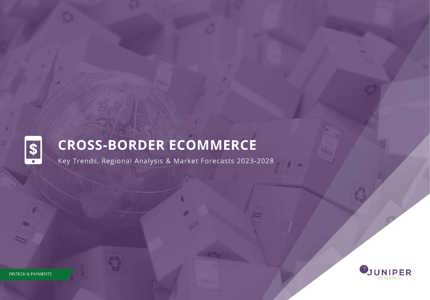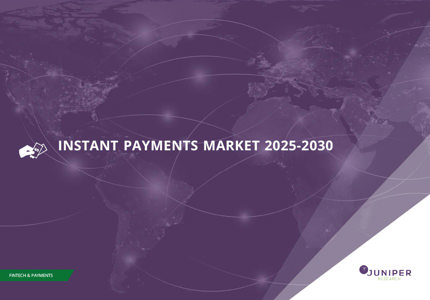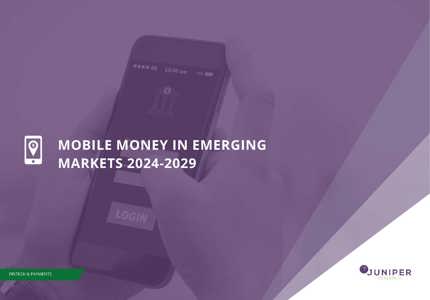BRICS Pay – Legitimate Challenge or Doomed to Fail?
Following the BRICS summit that was held in Russia in late October 2024, the concept of BRICS Pay has again moved into the spotlight. BRICS Pay is a proposed international payments system being created by a consortium of BRICS members, to rival the dominance of the US dollar in international payments. Russian President Vladimir Putin called directly for the system to be developed and implemented at the summit, to prevent “the dollar being used as a weapon.”
Why The Need for an Alternative?
For some time, the US dollar has been the default instrument for international payments, given the US economy’s importance to the world in terms of trade. A significant volume of all cross-border payments is carried via SWIFT; a messaging network that initiates international payments.
The challenge that certain countries, such as Iran and Russia have faced is that when international sanctions led by the US are applied, this can restrict access to the SWIFT system and other international payment systems, which can have a highly disruptive impact on the economies involved. For example, after the Russian invasion of Ukraine, Visa and Mastercard payment systems were switched off within Russia; creating difficulties.
The risk therefore with the current international payment framework is that it is subject to political considerations within Western countries, which will be seen as undesirable and a restriction on the sovereignty of many countries.
How Would BRICS Pay Work?
BRICS Pay would be built around the concept of financial sovereignty; creating an alternative system that cannot be switched off or restricted by the US or EU.
The concept is to create a fully independent network of financial institutions for cross-border payments; enabling BRICS members to conduct trade without interruptions. The envisioned system would include an interoperable retail QR code payments system, a B2B payments system, a cryptocurrency, a loyalty system for tourism and an international digital system for the settlement of cross-border securities.
What Prospects Does BRICS Pay Face?
Challenging the established cross-border payments system with a completely new framework is a daunting challenge. SWIFT is well established; connecting over 200 countries and territories, and connecting over 11,000 institutions. Scaling a competitor will require a significant amount of effort to build a system. This will include rolling out solutions to a large number of members, and testing functionality with a broad range of payment systems and banking software stacks. From a technical standpoint, this is challenging.
From a political standpoint as well, there are formidable challenges. BRICS is not entirely aligned as a group with the objective for reducing the importance of the dollar. Brazil and India in particular have expressed reservations around the system. This is unsurprising, given that these economies, which are experiencing rapid growth, have strong economic ties to the US and Europe. Creating BRICS Pay solely to pursue an anti-Western strategy and to embolden Russia and China is not in the interest of these countries, particularly for India, which has its own geopolitical challenges with China.
Therefore, getting off of the ground with a system will be a challenge, particularly one involving all BRICS members, from both a political and technical point of view.
However, the task is not impossible. The current cross-border payments landscape is quite challenging, with cross-border transactions being slow, expensive and difficult to track. Even outside of the sovereignty argument, there is genuine enthusiasm for alternative cross-border solutions. The countries involved represent 26% of global GDP (USD$ Current), meaning that there is a significant opportunity to address.
Rapid economic growth in these countries will mean that these opportunities will continue to grow. This will be particularly important as BRICS looks to expand, with the inclusion of a further group of countries which are shortly going to be added to BRICS, including Cuba, Bolivia, Thailand, Vietnam, Malaysia, Indonesia, Belarus, Turkey, Nigeria, Uganda, Kazakhstan and Uzbekistan.
What Can We Expect?
Fundamentally, the value of an alternative cross-border payments system for BRICS is high, so we do expect a viable system to emerge eventually. However, given the different countries and political goals involved, we anticipate that the process of implementing the system will be torturous. We also anticipate that many of the countries involved would only selectively use the systems, limiting its immediate impact.
What is clear however, is that as the sovereignty of payments only grows in importance, we will see greater than ever interest in alternative payment systems to challenge the established order.
Latest research, whitepapers & press releases
-
 ReportDecember 2025
ReportDecember 2025AI Agents for Customer Experience Platforms Market: 2025-2030
Our comprehensive AI Agents for Customer Experience Platforms research suite comprises detailed assessment of a market that is set to disrupt mobile communications. It provides stakeholders with insight into the key opportunities within the AI agents for customer experience platforms market over the next two years.
VIEW -
 ReportDecember 2025Fintech & Payments
ReportDecember 2025Fintech & PaymentseCommerce Fraud Prevention Market: 2025-2030
Our eCommerce Fraud Prevention research suite provides a detailed and insightful analysis of this evolving market; enabling stakeholders from financial institutions, law enforcement agencies, regulatory bodies and technology vendors to understand future growth, key trends, and the competitive environment.
VIEW -
 ReportNovember 2025Telecoms & Connectivity
ReportNovember 2025Telecoms & ConnectivityeSIMs & iSIMs Market: 2025-2030
Juniper Research’s eSIMs and iSIMs research suite offers insightful analysis of a market set to experience significant growth in the next five years. The research suite provides mobile network operators (MNOs), original equipment manufacturers (OEMs), and eSIM management and platforms vendors with intelligence on how to capitalise on the market growth, and guidance on how eSIM-only devices and sensors, SGP.42, in-factory provisioning, and iSIMs will change the competitive landscape.
VIEW -
 ReportNovember 2025Fintech & Payments
ReportNovember 2025Fintech & PaymentsModern Card Issuing Platforms Market: 2025-2030
Our Modern Card Issuing Platforms Market research suite provides a detailed and insightful analysis of this evolving market; enabling stakeholders from banks, financial institutions, fintech companies, and technology vendors to understand future growth, key trends, and the competitive environment.
VIEW -
 ReportNovember 2025Fintech & Payments
ReportNovember 2025Fintech & PaymentsDigital Wallets Market: 2025-2030
Our digital wallets research suite provides detailed analysis of this rapidly changing market; allowing digital wallet providers to gain an understanding of key payment trends and challenges, potential growth opportunities, and the competitive environment.
VIEW -
 ReportOctober 2025Fintech & Payments
ReportOctober 2025Fintech & PaymentsDigital Identity Market: 2025-2030
Juniper Research’s Digital Identity research suite provides a comprehensive and insightful analysis of this market; enabling stakeholders, including digital identity platform providers, digital identity verification providers, government agencies, banks, and many others, to understand future growth, key trends, and the competitive environment.
VIEW
-
 WhitepaperDecember 2025Telecoms & Connectivity
WhitepaperDecember 2025Telecoms & ConnectivityHuman + AI: Drivers of Customer Experience AI Agents in 2026
Our complimentary whitepaper, Human + AI: Drivers of Customer Experience AI Agents in 2026, examines the key drivers of the AI agents for customer experience platforms market in 2025.
VIEW -
 WhitepaperDecember 2025Fintech & Payments
WhitepaperDecember 2025Fintech & PaymentsBeyond Chargebacks: The True Cost of Fraud for Digital Commerce
Our complimentary whitepaper, Beyond Chargebacks: The True Cost of Fraud for Digital Commerce, examines the state of the eCommerce fraud prevention market; considering the impact of evolving digital fraud strategies, including key trends such as identity theft, account takeovers, chargebacks, policy abuse and friendly fraud.
VIEW -
 WhitepaperNovember 2025Telecoms & Connectivity
WhitepaperNovember 2025Telecoms & ConnectivityeSIM-only Devices: The Impact on Operators, Consumers, and IoT
Our complimentary whitepaper, eSIM-only Devices: The Impact on Operators, Consumers, and IoT, explores the challenges and opportunities for the three segments, with a particular focus on eSIM-only smartphones and SGP.42.
VIEW -
 WhitepaperNovember 2025Fintech & Payments
WhitepaperNovember 2025Fintech & PaymentsUnlocking the Next Stage of Growth for Modern Card Issuing Platforms
This free whitepaper analyses key trends shaping the modern card issuing space, and the ways in which modern card issuing platforms can capture growth.
VIEW -
 WhitepaperNovember 2025Fintech & Payments
WhitepaperNovember 2025Fintech & PaymentsTop 10 Fintech & Payments Trends 2026
Fintech is evolving fast. From stablecoins to agentic AI, our annual guide reveals the shifts redefining payments, digital identity, and the future of money in 2026. Download your copy today.
VIEW -
 WhitepaperNovember 2025Fintech & Payments
WhitepaperNovember 2025Fintech & PaymentsDigital Wallets: Empowering Financial Inclusivity
Our complimentary whitepaper, Digital Wallets: Empowering Financial Inclusivity, examines the state of the digital wallets market; considering the impact of digital wallets on different geographies, how they are shaping the modern payments landscape through lower transaction fees and promoting financial inclusivity for underbanked populations, and how they are competing with established payment methods.
VIEW
-
IoT & Emerging Technology
Juniper Research Unveils Top 10 Emerging Tech Trends to Watch in 2026
January 2026 -
Fintech & Payments
Digital Identity App Usage to Hit 6.2 Billion by 2030, Driven by Shift to Decentralised Models
December 2025 -
Telecoms & Connectivity
Travel eSIM Margins Under Pressure as Revenue per Gigabyte Falls 10% Globally in Two Years
December 2025 -
Telecoms & Connectivity
AI Agents to Power 1,000% More Customer Interactions for Enterprises Globally by 2027
December 2025 -
IoT & Emerging Technology
Global D2C Revenue Set for $370 Million Surge, But Satellite Operators Should Not Chase Full MNO Status
December 2025 -
Fintech & Payments
Digital Goods Fraud to Cost eCommerce Merchants $27 Billion Globally by 2030 as AI Tools Accelerate Attacks
December 2025
























